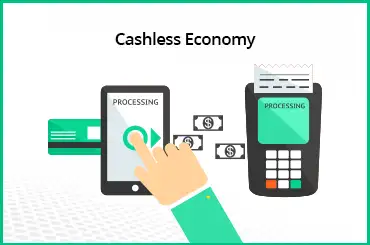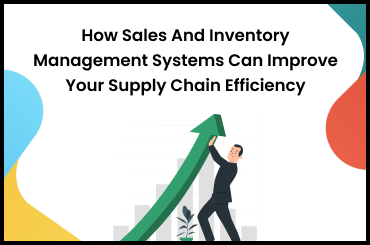Let's learn what is demand forecasting, why it matters, and how it can benefit businesses of all sizes and industries. In today's fast-paced business environment, accurately predicting customer demand is crucial for success. Demand forecasting is a strategic tool that helps businesses forecast future product or service demand.
In this article, you will find out how demand forecasting is crucial to optimize operational efficiency and driving business success. Whether you are a business owner, manager, or aspiring professional, understanding demand forecasting can give you a competitive edge in today's dynamic business landscape!
What Is Demand Forecasting?
Before jumping into further details, let us first see what is demand forecasting. Demand forecasting allows businesses to make informed decisions about production, inventory management, marketing, and resource allocation by analyzing historical data, market trends, customer preferences, and other relevant factors.
It involves analyzing data and using statistical techniques to predict future customer demand, which helps businesses plan their production, inventory management, marketing, and resource allocation strategies. Demand forecasting is a critical tool for businesses to anticipate customer needs, optimize operations, and make informed decisions to stay ahead in a competitive market.
Predictions are just the beginning of demand forecasting. In addition to informing company expansion and hiring decisions, demand forecasting helps guide product direction, pricing, and product positioning.
Importance of Demand Forecasting
It is vital to know the objectives of demand forecasting and how it supports businesses. Demand forecasting plays a crucial role in businesses for several reasons:
Efficient Production Planning:
Demand forecasting helps businesses plan their production activities more effectively. By estimating future demand, businesses can align their production schedules and capacities accordingly, ensuring that they have the right amount of products or services available to meet customer demands within the appropriate amount of time. It helps optimize production processes, reduce lead times, and minimize production costs.
Inventory Management:
Demand forecasting enables businesses to manage their inventory levels efficiently. By accurately predicting future demand, businesses can maintain optimal inventory levels, avoid stockouts or excess inventory, and prevent associated costs such as stockouts, overstocking, and obsolescence. It helps in reducing inventory carrying costs and improves cash flow.
Resource Allocation:
Demand forecasting helps businesses allocate their resources effectively. It enables businesses to plan their workforce, raw materials, and other resources based on projected demand, ensuring that they have the necessary resources available to meet customer demands without wastage or unnecessary costs.
Marketing and Sales Strategies:
Demand analysis and forecasting provide valuable insights into customer preferences, market trends, and buying patterns. This information helps businesses develop effective marketing and sales strategies, tailor their promotions and pricing, and identify new market opportunities. It also allows businesses to anticipate changes in customer demand and proactively adapt their marketing and sales efforts accordingly.
Financial Planning:
Demand forecasting plays a critical role in financial planning for businesses. Accurate demand forecasts help businesses estimate their future revenues, expenses, and profits, which in turn aids in budgeting, financial forecasting, and overall financial management.
Customer Satisfaction:
Meeting customer demands promptly is essential for customer satisfaction. Demand forecasting helps businesses ensure they have the right products or services available when customers need them, reducing the risk of stockouts or delayed deliveries. It leads to better customer satisfaction and long-term loyalty.
Demand Forecasting Methods
There are two main methods of demand forecasting, and one is qualitative demand forecasting and the other is quantitative demand forecasting. Various methods of demand forecasting fall under the qualitative and quantitative methods:
Qualitative methods rely on expert judgment, subjective opinions, and qualitative data to estimate future demand. Here are the top 5 qualitative demand forecasting methods:
Market Research:
Market research involves gathering data on customer preferences, buying patterns, market trends, and competitive landscape through surveys, interviews, focus groups, and other qualitative research techniques. This data is then analyzed to identify patterns and trends that can be used to forecast future demand.
Delphi Method:
The Delphi method is a structured approach that involves collecting and synthesizing opinions from a panel of experts. These experts provide subjective opinions on future demand based on their industry knowledge, experience, and expertise. The Delphi method helps harness experts' collective wisdom and obtain qualitative insights for demand forecasting.
Expert Opinion:
Expert opinion involves seeking inputs from individuals or teams with specialized knowledge and experience in the industry or market of interest. Expert opinion can be gathered through interviews, surveys, or informal discussions. While it is subjective in nature, expert opinion can provide valuable insights into market trends, customer preferences, and other factors that impact demand.
Market Intelligence:
Market intelligence refers to gathering qualitative data from various sources such as industry reports, trade publications, government data, news articles, and other relevant sources. It helps understand the market landscape, competitive forces, regulatory changes, and other qualitative factors impacting demand.
Historical Analogy:
Historical analogy involves using past events or historical data as a reference point to forecast future demand. For example, if there was a similar demand pattern during a particular season, economic condition, or market trend in the past, it is assumed that a similar pattern may occur in the future. The historical analogy can be useful in industries where cyclical or seasonal factors influence demand.
Quantitative demand forecasting methods use historical data and statistical techniques to estimate future demand. Here are the top 5 quantitative demand forecasting methods:
Time Series Analysis:
Time series analysis involves analyzing historical data to identify patterns and trends in demand over time. This method uses statistical techniques such as moving averages, exponential smoothing, and autoregressive integrated moving averages (ARIMA) models to forecast future demand based on past demand patterns.
Regression Analysis:
Regression analysis involves identifying the relationship between demand and one or more independent variables, such as price, promotion, seasonality, or other relevant factors. This method uses statistical techniques to estimate the parameters of the regression equation and then uses this equation to forecast future demand based on changes in the independent variables.
Neural Networks:
Neural networks are computational models that mimic the human brain and can be used for demand forecasting. They can process large amounts of data and identify complex patterns and relationships in the data. They can capture non-linear relationships and adapt to changing demand patterns, making them helpful in forecasting demand in dynamic and complex markets.
Exponential Smoothing State Space Models:
These models combine the concepts of exponential smoothing and state space models to forecast demand. This method uses statistical techniques to estimate the parameters of the state space model, which represents the underlying dynamics of demand, and then uses exponential smoothing to forecast future demand based on the estimated state space model.
Seasonal Decomposition in Time Series:
Seasonal and Trend decomposition using Loess or STL is a time series decomposition method that separates a time series into its trend, seasonal, and residual components. Once the seasonal component is identified, it can be used to forecast future demand based on historical seasonality patterns.
Types of Demand Forecasting Techniques
There are mainly four types of demand forecasting. All these demand forecasting techniques play a crucial role in determining consumers behavior:
- Macro-level demand forecasting involves estimating demand for an entire industry or economy rather than a specific product or service. This type of forecasting takes into account various macroeconomic factors, such as gross domestic product (GDP) growth, population growth, consumer spending patterns, inflation rates, exchange rates, and other relevant economic indicators that can impact overall demand.
- Micro-level demand forecasting refers to estimating demand for a specific product or service at a granular level, such as by stock-keeping unit (SKU), product category, or customer segment. Micro-level demand forecasting focuses on predicting demand for individual products or services in a more detailed and specific manner.
- Short-term demand forecasting refers to estimating demand for a product or service over a relatively short time horizon, typically from days to weeks or months. It is used to predict demand within a limited timeframe, allowing businesses to make timely decisions related to production, inventory management, pricing, and sales strategies.
- Long-term demand forecasting refers to estimating demand for a product or service over an extended period, typically from months to years or even decades. It is used to predict demand in the distant future.
Factors Affecting Demand Forecasting
The demand forecasting process is influenced by various factors that can impact the accuracy and reliability of the forecasts. The factors affecting demand forecasting may include:
Historical data: The availability and quality of historical data play a crucial role in demand forecasting. Accurate and comprehensive historical data on past sales, customer orders, and other relevant factors provide a foundation for forecasting models. The accuracy of demand forecasts depends on the accuracy and completeness of historical data.
Market trends and dynamics: Market trends, such as changes in consumer preferences, competitor actions, economic conditions, technological advancements, and regulatory changes, can significantly impact demand. It is essential to consider these external factors when forecasting demand to account for their potential impact on future demand patterns.
Seasonality: Many industries and products exhibit seasonality, where demand varies based on the time of year, holidays, or other seasonal factors. Seasonal demand patterns need to be considered in demand forecasting, as they can affect the accuracy of forecasts and impact production, inventory, and pricing decisions.
Product lifecycle: Different stages of a product's lifecycle, such as introduction, growth, maturity, and decline, can have varying demand patterns. Understanding the product lifecycle and its impact on demand is crucial for accurate forecasting, as demand patterns can change significantly at different stages.
Promotions and marketing activities: Promotions, discounts, and other marketing activities can impact demand by influencing customer behavior. The timing, magnitude, and effectiveness of marketing activities must be considered in demand forecasting to account for their potential impact on the market.
Internal factors: Internal factors such as production capacity, inventory levels, pricing decisions, and sales strategies can impact demand. Demand forecasting needs to consider these factors to ensure that production and inventory plans align with expected demand levels.
External factors: External factors such as changes in economic conditions, government policies, competitive landscape, and industry trends can affect demand. Monitoring and considering these external factors in demand forecasting is crucial to project future demand patterns accurately.
Data quality and accuracy: The quality and accuracy of data used in demand forecasting, including historical data, market data, and other relevant data sources, are crucial for accurate forecasts. Errors, gaps, or inaccuracies in data can impact the reliability of demand forecasts.
Forecasting method and model: The choice of forecasting method or model can also impact the accuracy of demand forecasts. Different methods, such as time series analysis, regression analysis, qualitative methods, and quantitative methods, may be suitable for different situations and industries. Choosing the appropriate forecasting method and model is essential to ensure accurate demand forecasts.
Benefits of Demand Forecasting
By leveraging demand forecasting, businesses can make informed decisions, improve operational efficiency, and achieve their business goals. It is a critical process that provides enterprises with valuable insights and benefits. The benefits or advantages of demand forecasting in a business can be summarized as follows:
Optimal production planning: Demand forecasting enables businesses to accurately estimate the expected demand for their products or services. It helps in planning production levels, ensuring optimal utilization of resources, and avoiding overproduction or underproduction. By aligning production with expected demand, businesses can avoid unnecessary inventory costs, minimize stock-outs or overstocks, and optimize their production processes.
Efficient inventory management: Accurate demand forecasting allows businesses to manage their inventory levels efficiently. Businesses can estimate the right amount of inventory needed to meet anticipated demand, avoid stock-outs or overstocks, reduce carrying costs, and minimize the risk of obsolescence. It leads to improved inventory turnover, reduced holding costs, and better cash flow management.
Pricing strategy optimization: Demand forecasting provides insights into the expected demand levels, which can aid businesses in optimizing their pricing strategies. Businesses can adjust their pricing based on anticipated demand fluctuations, market trends, and competitor actions. It helps maximize revenue, improve profitability, and gain a competitive advantage in the market.
Enhanced customer satisfaction: Accurate demand forecasting allows businesses to meet customer demand efficiently. By avoiding stockouts, businesses can ensure that customers get their desired products or services when they need them, leading to enhanced customer satisfaction. It can increase customer loyalty, repeat business, and positive word-of-mouth marketing, ultimately contributing to business growth.
Improved supply chain management: Demand forecasting helps businesses manage their supply chain better. By providing insights into anticipated demand, companies can work with their suppliers to ensure a smooth flow of materials and resources, avoid production delays, and optimize their supply chain processes. It improves supplier relationships, reduces supply chain costs, and increases operational efficiency.
Enhanced budgeting and financial planning: Demand forecasting aids businesses in developing more accurate budgets and financial plans. Companies can plan their resources, investments, and expenses by estimating future demand levels. It helps in effective financial planning, resource allocation, and risk management, ensuring that the business operates within its financial constraints and goals. Budgeting is one of the main components of any business operation, and when demand forecasting is done wisely, companies can save a lot of money.
Strategic decision-making: Demand forecasting gives businesses valuable insights that aid in strategic decision-making. Accurate demand forecasts can inform decisions related to market expansion, product diversification, new product development, and entry into new markets. It helps businesses identify growth opportunities, mitigate risks, and make informed decisions aligning with their business strategy.
Competitive advantage: Businesses that effectively utilize demand forecasting gain a competitive advantage in the market. Businesses can proactively respond to changing market conditions, customer preferences, and competitor actions by accurately estimating future demand. It helps them stay ahead of the competition, seize market opportunities, and adapt to market dynamics. Taking a competitive advantage with the right demand forecast practices can help a business stand out in the market among its competitors.
Challenges of Demand Forecasting
There are many valuable features of demand forecasting for businesses, but it also comes with its share of challenges. Some of the common challenges of demand forecasting include the following:
Data accuracy and availability:
Accurate demand forecasting relies heavily on the availability of reliable data. Businesses need access to historical sales data, customer data, market data, and other relevant data to develop accurate demand forecasts. However, data may only sometimes be readily available or may be incomplete, leading to inaccuracies in forecasting.
Uncertain and dynamic market conditions:
Market conditions can be uncertain and dynamic, making demand forecasting challenging. Factors such as changing customer preferences, competitive activities, economic fluctuations, and external events can impact demand patterns, making it difficult to predict demand accurately. Businesses need to constantly monitor and adapt to changing market conditions to improve the accuracy of their forecasts.
Seasonality and demand variability:
Seasonality and demand variability pose challenges in forecasting. Many products or services experience seasonal demand fluctuations, which can take time to forecast accurately. Demand variability due to factors such as promotions, discounts, weather conditions, and other unpredictable events can further impact the accuracy of demand forecasts.
Limited historical data for new products or markets:
Historical data may be limited or unavailable for new products or markets, making demand forecasting challenging. Businesses may need to rely on market research, expert opinions, and other qualitative methods to estimate demand, which may be less accurate than historical data-based forecasting methods.
Complex demand patterns and interdependencies:
Demand patterns can be tricky, with multiple variables and interdependencies that are difficult to capture accurately in a forecast. Factors such as customer behavior, product lifecycle, product cannibalization, and cross-selling or upselling can impact demand, making it challenging to develop accurate predictions.
Forecasting errors and biases:
Demand forecasts are subject to errors and biases that can impact their accuracy. Common mistakes include random errors, bias in historical data, and forecasting errors due to incorrect assumptions or faulty models. Businesses must regularly monitor and measure forecast accuracy and adjust their forecasting methods to minimize errors and biases.
Lack of flexibility and adaptability:
Demand forecasting relies on assumptions and models that may only sometimes capture changing market dynamics. Forecasting methods or models that are too rigid, may not be able to adapt to changing demand patterns, leading to inaccurate forecasts. Businesses must continuously review and update their forecasting methods to remain relevant and accurate.
Organizational challenges:
Demand forecasting may face challenges at the organizational level, such as a lack of coordination between different departments, data silos, and internal conflicts. These challenges can impact data availability, accuracy, and collaboration, leading to inaccurate demand forecasts.
How to Forecast Demand?
The process of forecasting demand typically involves several steps, which can vary depending on the specific methodology or approach used. Here are some general steps involved in the demand forecasting process:
Define the objective:
Clearly define the purpose and objective of the demand forecasting exercise. It may include understanding customer demand for a new product, estimating sales for a specific time period, or planning production levels.
Gather data:
Collect relevant data for the demand forecasting process. It may include historical sales data, customer data, market data, and other relevant information. The accuracy and quality of the data collected will directly impact the accuracy of the forecast.
Select a forecasting method:
Choose an appropriate forecasting method or technique based on the available data, the objective of the forecast, and the characteristics of the demand pattern. It can include qualitative methods such as expert opinions, surveys, or market research, as well as quantitative methods such as time series analysis, regression analysis, or machine learning algorithms.
Clean and analyze the data:
Clean and preprocess the data to remove any outliers, inconsistencies, or errors. Analyze the data to identify trends, patterns, or seasonality influencing demand.
Develop the forecast:
Use the selected forecasting method to develop the demand forecast. It may involve applying statistical techniques, mathematical models, or other algorithms to the data to generate the forecast. To ensure its reliability, validate the forecast using various metrics, such as accuracy, error rates, or confidence intervals.
Interpret and communicate the results:
Interpret the demand forecast and understand its implications for the business. Communicate the results to relevant stakeholders, such as senior management, sales, marketing, and operations teams, to facilitate decision-making and planning.
Monitor and update the forecast:
Demand forecasting is an ongoing process, and it is vital to monitor the actual demand against the forecasted demand. Update the forecast as new data becomes available or as market conditions change to ensure its accuracy and relevance.
Incorporate feedback and adjust:
Learn from past forecasting mistakes and incorporate stakeholder feedback to refine the forecasting process. Adjust the forecasting methods, data inputs, or assumptions as needed to improve the accuracy and effectiveness of the demand forecasts continuously.
It's important to note that demand forecasting is not an exact science, and forecasts are subject to errors and uncertainties. Therefore, it's crucial to regularly review and refine the steps in demand forecasting to enhance its performance and value in supporting business decision-making.
Explore Data-Driven Demand Forecasting for Business Success
Having understood what is demand forecasting, the demand forecasting process, and methods, you can optimize inventory levels, and improve your overall supply chain management. TranZact helps you manage your sales data, inventory trends, and other key parameters affecting demand forecasting. Therefore, it acts as an essential tool for business planning, enabling SMEs to drive informed business decisions and build resilience in a rapidly changing marketplace.
FAQs of Demand Forecasting
1. Why is demand forecasting important?
Demand forecasting is essential because it helps businesses make informed decisions about production, inventory, sales strategies, and resource allocation. It allows companies to anticipate and plan for future customer demand, optimize operations, reduce costs, and improve customer satisfaction.
2. What are demand forecasting methods?
The most commonly used Qualitative Demand Forecasting methods and mediums are Delphi Method, Market Research and Surveys, Expert Opinions, Historical Analogy, and Sales Force Composite. Quantitative Demand Forecasting Methods include Time Series Analysis, Moving Averages, Exponential Smoothing, Trend Projection, and Regression Analysis.
3. What are the uses of demand forecasting?
The significant uses and purposes of demand forecasting are production planning, sales and marketing strategies, inventory management, financial planning, product development, and supply chain management.
















